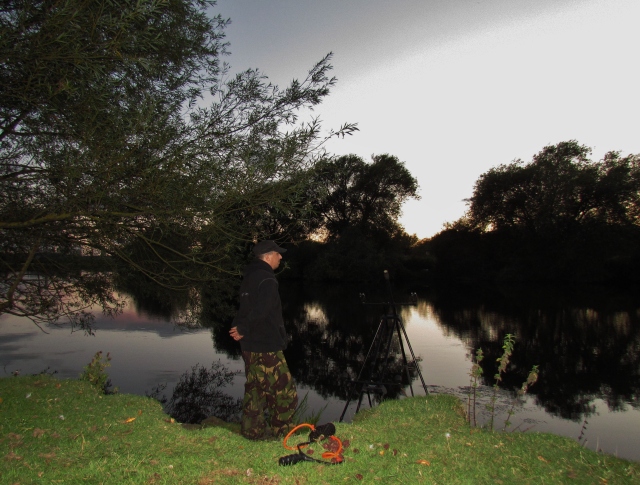
Walk the river banks, find a swim and then splosh a great big 5oz feeder on their heads and catch fish because that’s what we do, don’t we?
Well, historically the feeder has become an integral method used by barbel anglers up and down the country on large rivers. The method has gathered in popularity for barbel fishing, for good reason as many big barbel hauls have come from such a method, especially in matches.
I often walk the banks of my local River Trent and watch as anglers fishing for barbel are doing so in almost the exact same way as each other.
Yes the feeder approach has made us all like clones…
I would hazard a guess that 80% of angler’s on large rivers such as the Trent will fish a feeder and know little about other methods or tactics to catch them, particularly the larger specimens.
I can’t knock something that has stood the test of time and caught a large number of barbel numerous times. However, in my opinion the law of averages suggests a big barbel will fall to this method eventually due to the vast amount of anglers using this method.
I use the feeder method, of course I do but only sometimes, and with a plan behind it. I hope to expand on my uses for this method and the way I normally approach large rivers in this article for more consistent specimen barbel fishing.
Have a Plan!
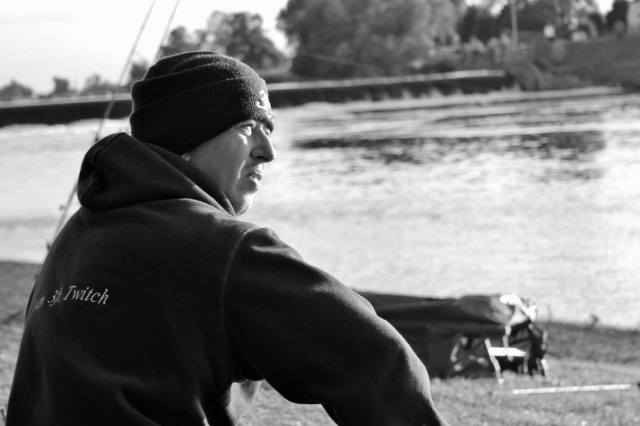
The most important part of fishing for larger barbel in my opinion is to have a plan, a plan on how you wish for the barbel to feed or how you would like them to feed. Of course with this plan the variables in weather, water temperatures and time of the year come into consideration.
A well thought out plan and line of attack is very important because you’re not only taking the variables into account but the approach in which to target the barbel in their environment. This is done by lines of attraction, or feed to the source, namely your bait. This will hopefully lead the barbel to that bait and ultimately make a mistake resulting in a successful capture.
I think the most important thing to consider is that barbel will not feed in any other way but straight lines and once that is considered and clear, the more barbel you will catch!
This is how most barbel are caught regularly, but consider this…what if the barbel get so used to being caught in this way that they eventually wise up? Not because they stop feeding in this way but because they’re always being fed on one particular line?
As an angler growing up and learning my roots before moving on to specimen barbel fishing, the consensus when using a feeder was to cast to the same spot every time. You build up a bed of bait and create competition for food amongst the fish and bag up, easy!
Many anglers I am sure have grew up being taught the same principles which is why I elaborate on the use or feeding of one line (casting to the same area).
In my opinion the casting of one area associated with feeder fishing, limits the probability of a big barbel and often results in missed opportunities from a big fish picking up the bait.
Bear this in mind when planning your approach to target big barbel. Quite often the bigger barbel will feed in groups of two and three and ultimately you want a chance of catching all of them, if possible.
The feeder in my opinion is not best used for targeting these specimens specifically as everything with this approach, such as attraction and free offerings are confined to one line or area of the swim. This then attracts the barbel to that area, which are quite often smaller. This is largely down to that thing called ‘competition’ that the feeder is designed and used for generally.
Bigger barbel do not want to compete with other fish so creating it will often only attract the smaller barbel in the area.
The Approach
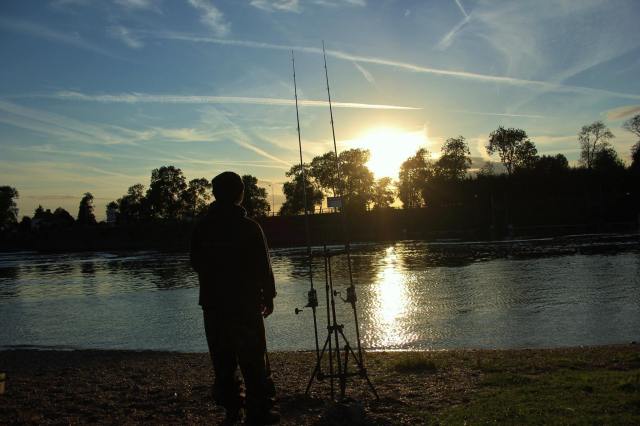
I can only explain my thoughts and what I do to target bigger fish specifically, if indeed this is your intention…
As I have explained a feeder approach confines all bait/attraction into one specific area because we were always taught to do this, most of us will know this and try and be as accurate as we can with our casting. I have tried to explain the reasons why for bigger barbel it goes against how these bigger fish wish to feed.
The straight lead and single bait with a spread of boilies in my opinion gives these bigger barbel exactly what they’re looking for. By feeding boilies you’re not creating mass attraction, you’re simply creating lines of food pocketed around the swim for bigger barbel to pick up and work for the bait.
You’re not creating a huge plume of attraction and feed constantly in one place that’s preferred by competing fish. You’re creating a spread approach in your swim that due to the various lines when feeding the boilies via a catty (upstream and in front of you when fishing downstream) creates a situation whereby larger barbel are more befitting of this way of feeding. Gaining larger barbel confidence as they go is what this way of feeding does more specifically.
The various lines in which you adopt in your feed are very important as I believe it spreads the barbel about that will feed on those separate lines. As explained the feeder works on just one line. In effect if you were to attract larger barbel into your swim you might only hook one before spooking the others, or none at all if it realises something isn’t right, this doesn’t happen with this approach. The mere fact that bigger barbel feeding together on one line makes me rather uncomfortable fishing for them in this way, thus opting for something that I believe gives me an ‘edge’.
The straight lead and the spread approach is not by any means revolutionary, carp anglers and some barbel anglers use this method today with great results. However, many anglers that have been introduced to barbel fishing, only know one way, those anglers have also questioned why they’ve never caught anything bigger than 9lbs.
I will start a session with two handfuls of 16 to 18mm boilie during the summer months, this can be anything of course, barbel are not fussy when it comes down to size. I use my companies 3 Foot Twitch boilies such as the Dubby in summer, Flamin’ Furter or Bounty during the autumn and winter months.
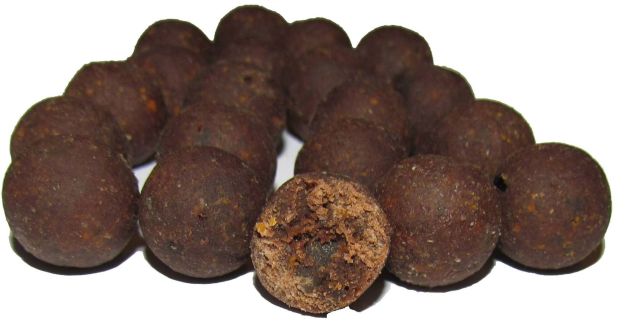
Of course this is adapted during the season, throughout the winter I may only start with 6 – 8 boilies at the beginning of a session.
The bait is then singularly placed into the catty and fired out into the swim upstream and straight in front of you, being careful not to create a wide spread to far downstream, but utilizing your whole swim.
I then await an indication on the tips, this could be anything from a tap to a full blown take. If nothing is forthcoming after an hour and a quarter I will launch another 6 – 8 boilies out into the swim (2 – 3 in winter) and expect to see some form of indication thereafter. This creates confidence in the feeding fish as they pick these baits up of course, and they’re naturally looking for the next meal, it’s not all in one place, they’re searching!
This is also very important as the longer a barbel is looking for that next meal the more chance it has of finding yours next. A feeder acts in totally the opposite way, giving barbel that one meal in one place in a tight area that one opportunity that could quite easily spook that, and the rest of the fish around it if it felt something wasn’t right. You limit that risk with a spread of bait as the barbel are feeding on these different lines (that word again) in your swim.
I will keep the boilies trickling into the swim knowing that once I hook into a barbel, picking another up is more than achievable quite quickly.
This is down to how the spread approach works – spreading the bait will also spread the barbel and that’s exactly how you want them to feed to avoid the all or nothing approach via a feeder.
In fact the only times I use a feeder nowadays is if I’m trying to create an attraction to an area, drawing barbel into the swim where the feeder in my opinion comes into its own. I am purposely trying to draw fish onto the source of the feeder but spread the barbel out by using the spread of boilie over the top. I use this approach when I know the fish are sitting further downstream in snags or backing off the area on pressured swims/stretches.
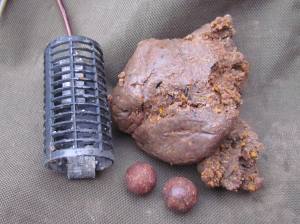
The feeder used in the winter is also a fantastic method, filling the cage with either scalded low oil pellet or a very soluble paste that breaks down very quickly that releases scent into the water that alerts any nearby barbel. Scent and more importantly soluble liquids and powders create an high attraction in winter when food items are less appealing to barbel.
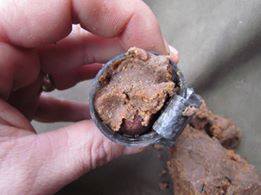
Barbel respond well to this method and as such I use the soluble paste and feeder method a lot during the winter months.
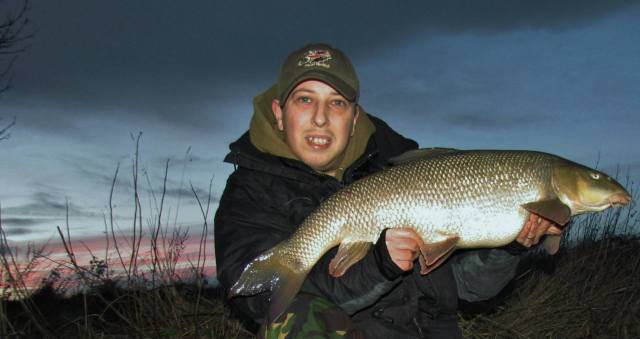
The consensus is to release soluble attraction without actually feeding the fish, this is very important as their metabolism slows right down in the winter months.
Fundamentally, summer, autumn or winter what I see most people doing wrong when fishing for barbel is their feeding approach. It isn’t rocket science, it isn’t revolutionary but a small change in the way you approach your quarry can be the difference in putting big fish on the bank or not. You’re fishing for bites and you’re not spending lots of money on boilies or lots of pellet for that reason. With this method, with this approach in feeding you’re simply utilizing and making the most out of your swim.
Of course there’s no substitute for location and actually finding the fish but the feeding in which I have depicted here has caught me lots of double-figure barbel upwards of 17lb. Whilst it has been used and continues to be used by barbel and carp anglers alike, it’s lost on many others.
Rigs
This is the least important element in which you need to worry about, feeder or lead – your choice, but bear in mind that the choice you make is with a plan in mind. How many anglers do you see lob a feeder out and forget about it until they get a bite? Is this fishing effectively?
I prefer to keep busy, work the swim and come up with something that the barbel are looking for in terms of how they wish to be fed.
Rigs are really only important to the angler, what gives you confidence at the end of the day.
I use a semi-fixed gripper lead at the lightest weight that I can get away with so it is easily dislodged by a wary or sly barbel, 15lb reel line and a leader of 25lb if fishing near snags with a 25lb braided hooklink to a size 6 hook which incorporates an 18mm boilie on a hair.
My lead clip system simply pushes into a size 8 swivel at one end (not tight) with a quick link system at the other where a loop is formed in my hooklink and an anti-tangle sleeve is pushed over the loop and onto the swivel.
Free running or semi-fixed, again the choice is yours, as long as it’s safe and the lead is free to come away if you were to lose the fish and your end tackle in a snag. No fish should ever be tethered and as an angler we have a duty of care to respect the ones we do catch and the ones we lose, that’s fishing!
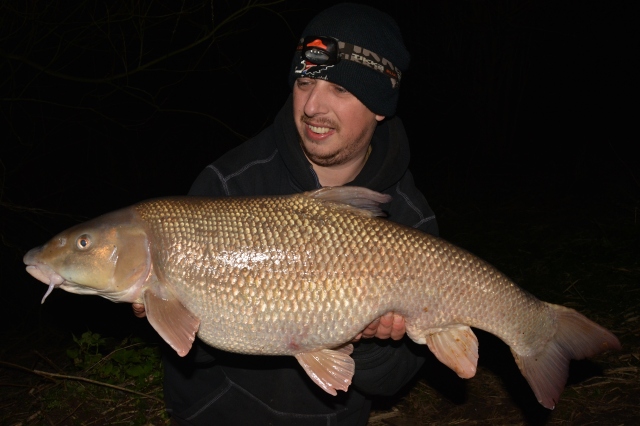
I have hopefully explained how I go about my fishing and helped one or two people out there. As I have said this is my approach and it works for me, maybe give it a go and see for yourself how effective this is at picking up the bigger barbel!
Tight lines
Richard


Great read mate, won’t be long now
Thank you – have a great season!
What a great read!
Thank you
That was good reading Richard and agree with a lot of your comments you have said .I tend to use feeder in the summer and pva in the winter with just few offerings hoping they grub about and find your bait.
Glad you found it interesting mate. Thank you
Hi Richard, great read and I found quite thought provoking, going to the Trent at Winthorpe soon and I will put your theory to good use, tight lines mate. Ps also follow your posts on Facebook.
Good man Mike
Hi Richard I find your articles very interesting but I can’t get my head around where are the free offerings hitting bottom?? I used to fish for carp and have only recently started barbel fishing. I also target the barbel on the trent and where iv been fishing at south muskham 6oz leads just hold bottom , after going through the current and bouncing on the bottom the leads are holding bottom a good 10 meters from where they hit the water. This is a 6oz lead so if I introduced free offerings who knows where they will hit bottom??? Your advice would be kindly accepted
Regards Andrew Marsden.